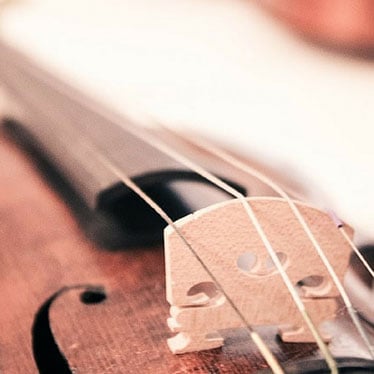How Much Does Violin String Choice Matter?

Learning to play a stringed instrument is a rewarding, yet challenging process. The desire to sound better each time you play and expand your abilities so that you can produce music that expresses your individual personality are natural goals; and reaching them means practicing often and with regularity. However, did you know that the strings you use on your instrument actually impact how difficult that will be?
It’s true. Many violin students realize that there are numerous strings available, but aren’t necessarily aware of the significant influence that the strings have on their playing, their instrument, and the overall sound that is ultimately possible with the right set. They wonder if string difference matters that much when trying to find the optimum sound and voice for their violin, but the answer is most definitely yes.
Although there is no one brand or type of violin string that is right for every player, understanding the differences in tone, responsiveness, and projection can help you make the best decision for your individual violin. Essentially, your string choice matters a lot. It will dictate how quickly you can advance and how beautiful your specific violin will sound.
Types of Violin Strings
There are three basic violin string core types, gut, steel, and synthetic; and string gauge (thickness) is also classified into three categories. Each type offers different benefits and features, along with its own set of drawbacks.
Gut—originally, all musical strings were made from sheep gut, but in the 1500’s, craftsmen began to wrap the thickest ones with silver wire to intensify their mass. The mass of the string is directly related to its projection, how much volume or fullness you can produce. Modern gut strings are available in either pure, unwound gut or wound, and the result is a complex sound with warm, rich tones. However, their natural core means that these strings are very susceptible to changes in humidity and frequent tuning is required to maintain the correct tension.
Steel—strings that utilize a steel core have a brighter, thinner sound and are often used in jazz, bluegrass, or rock music, where a crisp edge is desirable. Typically smaller in diameter, steel strings offer a quick response and once they have been “played in,” usually don’t need tuning as often as gut.
Synthetic—this innovative string core offers violinists a warmly toned string with excellent responsiveness. Students and professional players alike prefer this type of string for the complex sounds it offers combined with the enhanced pitch stability that steel core strings are known for. Another benefit of the synthetic string is the price. Some new student sets are very affordable, you can purchase them for around $20.
Gauges—all string makers have their own interpretation of the thicknesses they offer. Since gauge is a measurement of diameter, generally you can choose from three thicknesses, thin, medium, and thick. Each brand will offer its own particular tension/gauge measurements that affect overall tone and responsiveness of the string. A few generalities about string gauges include:
- Thin strings provide a bright tone and responsive string (how quick the string creates sound when bowed)
- Thick strings offer a more robust depth of tone and volume, but have a slower response time
- The tension of the strings is determined by the type of metal used to wrap it
- If one of the strings on your violin sounds too dull or heavy, try replacing it with a lighter gauge; likewise, if one string sounds too tinny or shrill, you may want to replace it with a heavier gauge.
Finding your Best Sound
The best sound you can create really involves two factors, your violin and the strings you choose. Strings must be matched to the player and the instrument. A set of strings that sounds phenomenal on “Fred’s” violin, may sound awful on yours. To find the best sound for your instrument you’ll need to experiment with different varieties, but take your time. Many student violinists find that the synthetic nylon strings offer the best playability and warmth, but you might discover that the bright tones created by steel fit in better with your violin and your musical preference.
Moreover, finding the optimum set of strings for your violin may include purchasing different types of strings. For example, you may find that a certain brand E string sounds best with a different brand on the others, and keep in mind that the combination that works best for your violin might also include gauge variations.
The violin strings have a huge impact on your performance. In certain situations, the strings you choose will dictate the playability of your violin, but they will definitely determine the quality of sound you can ultimately produce. Take your time experimenting with different types and brands to discover your unique, optimum string combination.

